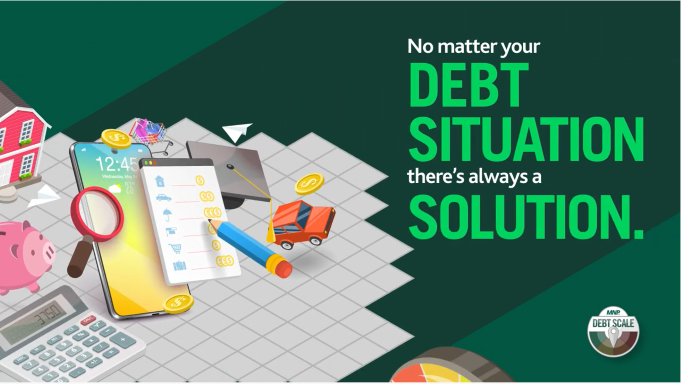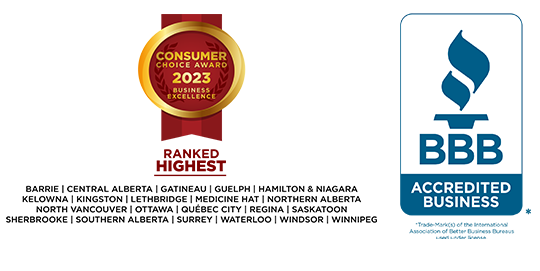4 Tips to Make the Most of Your Check Up on the MNP Debt Scale
How much debt is too much? Of all the questions Licensed Insolvency Trustees often hear, that is by far one of the most common. It’s also one of the most difficult to answer.
Any number of factors can impact your experience with debt, from income and expenses to interest rates and repayment terms. Two people who seem like they should have a similar ability to manage debt can often have widely different experiences.
That’s why debt professionals often prefer qualitative measures like whether you maintain a balance from month to month or if you’re missing payments, when assessing your situation. Unfortunately, for all they reveal, those questions rarely provide the neat and tidy answer most people are searching for.
Here’s where the MNP Debt Scale can help. This powerful 14-question assessment tool puts those questions into a clear and quantifiable rating of your debt situation regardless what you earn or how much you owe.
It won’t tell you how much debt is too much, but it can do you one better by helping you evaluate your debt health and guiding your path to financial wellbeing — provided you follow the tips below.

Answer questions honestly
We’ve carefully selected each question to identify specific challenges debtors commonly face. Your responses will reveal a lot about your current experience with debt and how it is likely to evolve over the near and long term. The more honestly you answer, the clearer this picture will be.
Please note that some questions are personal in nature and may be uncomfortable to answer. This is normal. We’re taught from a young age to avoid discussing finances in polite company. Most of us dislike disclosing our salary, much less that we’re falling behind on our bills. But you owe it to yourself to push past the discomfort.
Rest assured, your responses are also anonymous and completely confidential. We can only access your final results with your permission if you choose to schedule a Free Confidential Consultation.
Read your assessment carefully
Once you complete the assessment, we’ll rate your financial situation with a numerical score and indicate where you sit on the scale (e.g., low, moderate, high, extreme). We will also provide a detailed explanation of what your rating means and recommendations for what to do next.
| Score | Indication |
|---|---|
| 0-40: Low |
A low score indicates you have a low debt-to-income ratio and little trouble meeting your monthly payment obligations. Having less debt may improve your peace of mind, and it likely isn’t getting in the way of your relationships or ability to make ends meet. |
| 41-80: Moderate | A moderate score indicates your debt is currently manageable, but there are early signs you could be trending toward financial difficulty. Perhaps the amount you owe is increasing, or you’re struggling to save as much as you’d like. This suggests you may want to adjust your financial habits. |
| 81-110: High | A high score generally indicates you are either insolvent or trending toward insolvency. You may be paying interest on outstanding balances each month, falling behind or missing payments, and generally feel stressed by your finances. It’s likely time to evaluate your debt management options. |
| 110+: Extreme | An extreme score indicates you are almost certainly insolvent and would likely benefit from a Bankruptcy or Consumer Proposal proceeding. You may be behind on payments, having wages garnished, and/or relying on high-risk lenders like payday loan providers. You should reach out to a Licensed Insolvency Trustee right away. |
A careful review of your assessment can provide a lot of valuable information. For instance, your rating may be moderate, but your score could be on the high end (e.g., 76), indicating a worrisome trend. This may be a good opportunity to review your answers and our recommendations to understand where you might be experiencing difficulties and what you can do about it.
Reach out to a professional
You can think of the MNP Debt Scale like your annual check up with your family physician. You could walk away with a clean bill of health, or we may uncover signs further assessment is in order.
No matter where you sit on the MNP Debt Scale, reach out to our Licensed Insolvency Trustees for a Free Confidential Consultation. These sessions are completely complimentary and confidential and available to any Canadian debtor who wants to better understand their debt and financial wellbeing. Together we’ll review your financial history, identify your challenges, discuss your goals, and walk through every option to regain control of your debt.
If your rating is low, we may discuss strategies like improving your budgeting or debt consolidation. If it’s moderate, high, or extreme, we’ll help you compare all your options — from consolidation or non-profit credit counseling to Bankruptcy and Consumer Proposal — and recommend solutions that will put you on the fastest and most affordable path to your financial fresh start.
Check back in from time to time
Just like your annual check up, we hope you continue to revisit the MNP Debt Scale at least once every year to gauge your progress on the path to financial wellbeing. Use this tool in combination with our Budget Tracker Spreadsheet to monitor your income and spending habits and identify any worrisome trends before they become a problem.
For an added dose of vitamins and minerals, we also recommend keeping up with our blog and 3-Minute Debt Break Podcast which we update frequently with all kinds of helpful tips and tools to manage your debt.

